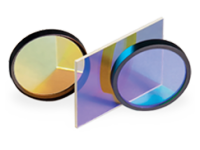Scientific CMOS (sCMOS) is a breakthrough technology that offers an advanced set of performance features that renders it ideal to high fidelity, quantitative scientific measurement. The multi-megapixel sensors offer a large field of view and high resolution, without compromising read noise, dynamic range or frame rate.
 Balor sCMOS
Balor sCMOS
Balor is Andor’s game-changing, very large area sCMOS camera platform for Astronomy, the perfect solution for Large Sky Surveys that measure photometric and astrometric variability across timescales ranging from milliseconds to tens of seconds.
16.9 Megapixel / 70mm sensor – large sky surveys
54 fps full frame – fast solar dynamics/fast moving object
Low read noise – detect weak signal/small objects
Extended Dynamic Range – across range of object brightness/sizes
Minimal down time - vacuum longevity and quality: no moisture.
Balor is Andor’s game-changing, very large area sCMOS camera platform for Astronomy. It launches with the Balor 17-12 model, featuring an enhanced FoV 16.9 Megapixel, 70mm diagonal sensor, coupled with fast, low noise readout capability. Balor is ideal for measuring photometric and astrometric variability from milliseconds to tens of seconds timescales.
Balor is the largest commercially available sCMOS camera, designed for ‘dynamic astronomy’ applications such as Orbital Debris tracking, Solar Astronomy, Solar System Object detection, Exoplanet Discovery, Atmospheric Studies and Fast Time Resolution Astrophysics. Balor lends itself particularly well to the ‘atmospheric freezing’ techniques of Speckle/Lucky Imaging, enabling resolution enhancement of ground-based astronomy over a much larger field of view than is readily achievable through use of adaptive optics.

Balor combines 2.9 e- read noise with an exceptionally fast 18.5 millisecond readout, allowing up to 54fps full frame readout, perfect for studying solar or atmospheric dynamics. The faster readout capability, 2500x faster than CCDs, also renders Balor superb for exoplanet discovery, radically compressing measurement cycle times and allowing more time to instead be spent capturing scarce photons.
 Balor outperforms in the area of quantitative photometric measurement. Complimented by a market-leading linearity of > 99.7%, the large 12 µm pixels offer an 80,000 electron well depth and an on-chip multi-amplifier design means the whole photometric range, from the noise floor up to the saturation limit, can be captured with one image. Such capability is ideal for photometric accuracy of light curve measurement across high dynamic range object fields.
Balor outperforms in the area of quantitative photometric measurement. Complimented by a market-leading linearity of > 99.7%, the large 12 µm pixels offer an 80,000 electron well depth and an on-chip multi-amplifier design means the whole photometric range, from the noise floor up to the saturation limit, can be captured with one image. Such capability is ideal for photometric accuracy of light curve measurement across high dynamic range object fields.
Balor delivers both Rolling Shutter and Global (Snapshot) Shutter exposure modes. The latter can be useful for applications where every pixel across the array must carry the same relative exposure timing correlation, relative to an external timestamp.
Features
49.5 x 49.2 mm sensor - Very large field of view from 16.9 Megapixel, 12 mm pixel pitch sensor
18.5 millisecond readout - Readout a 4k x 4k sensor 2,500x faster than a CCD. More data throughput less downtime!!
Up to 54 fps - Unique solution for a range of high time-resolution observing challenges, without compromising noise or FOV.
Extended Dynamic Range and > 99.7% Linearity - Superb quantitative accuracy across a wide range of magnitudes within a single image.
Readout noise ~ 2.9 e - Exceptionally low noise, even at max frame rate, suited to short exposure, low light observational challenges.
No inter-pixel “dead area” - No discontinuities in images that could contribute to loss of information. 80 000 e- well depth Deep well depth, provides high dynamic range (high contrast) images thanks to sCMOS low noise floor. Enables the acquisition of long images without oversaturation of the pixels to record even the weakest signals.
UltraVac™ - Critical for sustained vacuum integrity and to maintain unequalled cooling and QE performance, year after year.
CoaXPress as standard - 4 Lane CXP-6 interface enabling the highest frame rates over distances up to 30 m.
Rolling and Global shutter supported - Maximum exposure and readout flexibility across all applications. Global Shutter for snapshot capture of fast moving/changing events.
| System Specification | ||
| Sensor Type | Large area, Front-illuminated sCMOS | |
| Array Size | 4128 (W) x 4104 (H) | |
| Pixel Size | 12 x 12 mm | |
| Image Size | 49.5 mm x 49.2 mm (69.9 mm diagonal) | |
| Readout Modes | Rolling Shutter and Global Shutter | |
| System window type | AR coated UV grade fused silica window (>98% transmission) | |
| Interface | CoaXPress (4 Lane CXP-6) | |
| I/O | Fire Row1, Fire Row N, Fire All, Fire Any, Arm, Shutter, Ext Trigger | |
| Trigger Modes | Internal, External, External Start, External Exposure, Software | |
| Advanced Performance Specifications | Rolling Shutter | Global Shutter |
| Dark Current | 0.35 e-/pix/sec (@ 0°C) 0.08 e-/pix/sec (@-10°C) 0.03 e-/pix/sec (@-30°C) |
0.5 e-/pix/sec (@ 0°C) 0.15 e-/pix/sec (@-10°C) 0.065 e-/pix/sec (@-30°C) |
| Read Noise (e-) median | 2.9 e- | 4.3 e |
| Active area pixel well depth | 80 000 e- | |
| Peak QE | 61% (@ ~ 600 nm) | |
| Photon response non-uniformity (PRNU) | < 0.5% (@ half well depth) | |
| Region of Interest | User-definable, 1 pixel granularity | |
| Linearity | > 99.7% | |
| Data Range | 16-bit | |
| f-number | 0.35 (Cone Angle 110°) | |










